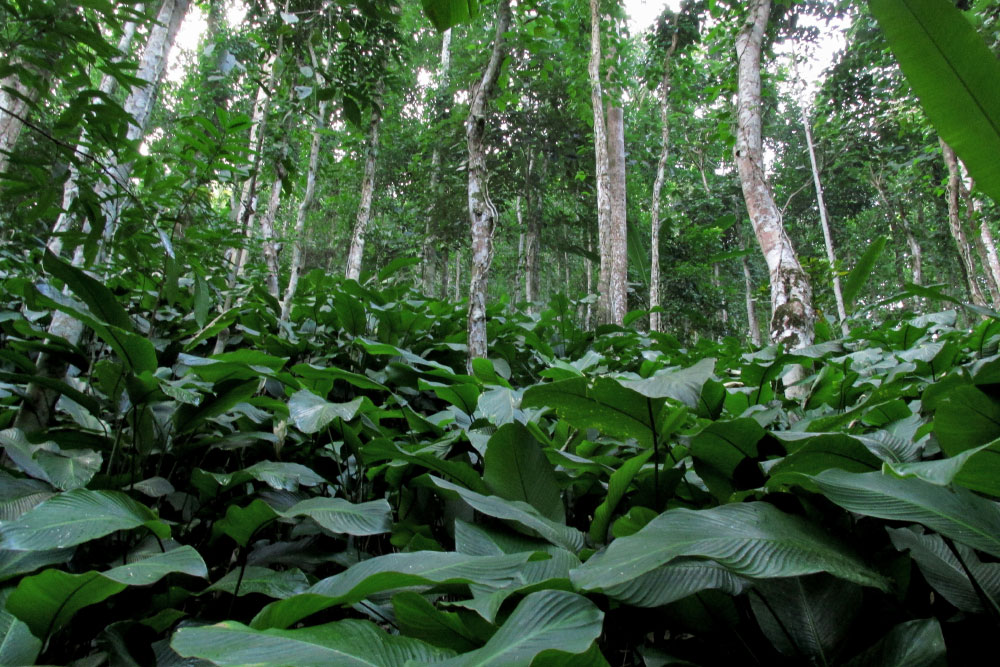Agricultural expansion continues to be a major cause of forest loss and degradation in the tropics. It often results in negative impacts on the resident floral and faunal communities inhabiting the forests. These communities have so far best been safeguarded by preventing forest loss and degradation through the establishment of Protected Areas (PAs)—legal conservation frameworks such as National Parks, Wildlife Sanctuaries and Community Reserves. However, the social and political realities of today make the further establishment and expansion of PAs extremely difficult and conservation scientists have been attempting to make use of different land-use types in agricultural landscapes in order to stem the negative impacts of forest loss and degradation on forest communities. It is this conservation issue that the study “In a tree by the brook, there’s a songbird who sings”: Woodlands in an agricultural matrix maintain functionality of a wintering bird community attempts to address.
The study was published in PLOS One and can be accessed here.
The study investigates the part played by woodlands in an agricultural landscape surrounding a PA in Meghalaya, India, in maintaining different groups and species of forest birds across the landscape. In the study, bird species are grouped together into ‘guilds’, or groups of birds with shared characteristics, and their relationship with woodland vegetation—tree cover, bamboo cover and shrub cover—and the distance from the PA are explored, while also determining the extent to which woodlands are used by them. In addition, the extent to which individual species seemingly use the woodlands is also explored.
The results of the study show that all the bird groups that were looked at—fruit feeders, nectar feeders, different types of insect feeders, mixed feeders and grain feeders—had varying relationships with the vegetation of woodlands. Considering that tree cover was high in almost all woodlands, it did not seem important in influencing groups of birds known to be forest-dependent. However, high tree cover did appear to not benefit groups of birds such as mixed feeders and grain feeders, which are not necessarily forest-dependent. The amount of shrubs and bamboo in woodlands were also influential, being detrimental and beneficial respectively, in determining the use of woodlands by a couple of forest-dependent groups.
More importantly, though, the study highlighted the fact that these woodlands were capable of supporting all the bird groups that were studied. This capability is significant in light of the shared characteristics of the bird species comprising each group, and their potential role in the ecosystem as insect control agents, pollinators and so on. When individual species of each group was looked at, it was seen that three explanations work together for how these different groups were supported by the woodlands. Firstly, within some groups were species that used woodlands across the entire landscape, irrespective of the location—within the agricultural landscape or the PA. Secondly, there were many species making up a particular group. As such, even if a few species within a group disappeared in the agricultural landscape (as compared to the PA), the remaining species prevented the group as a whole from disappearing. Finally, within a few groups, there were species that used woodlands in the agricultural landscape more than the forests of the PA. Moreover, there were additional species that were found only in the agricultural landscape, also reflected in the higher species richness of the agricultural landscape compared to the PA.
However, despite the capability of these woodlands in supporting these different groups of birds, the study also found that species of conservation concern may lose out in the woodlands of the agricultural landscape. Species such as hornbills and large woodpeckers appeared to make use of forests of the PA more than woodlands in the agricultural landscape. This suggests that there may be a lack of agricultural land-use types that can act as substitute for a PA in the conservation of these birds. Forest loss and degradation driven by human land-use activities continue to be part of the trends happening today in the world. The study draws attention to the need to better understand agricultural landscapes in order to aid biodiversity conservation.
It highlights the usefulness of woodlands in an agricultural landscape in the conservation of different groups of birds, as well as the limitations of these woodlands in conserving some important species. The study is placed in the context of a tropical agricultural landscape of Northeast India where there have been noticeable changes in the forest cover, with land increasingly coming under permanent open cultivation. Hence, the authors suggest that land management should promote wooded land-use types such as regenerating forests or community-managed forests due to their supplementary role in bird conservation.



 CI is a non-profit, non-commercial portal that aims to facilitate wildlife and nature conservation by providing reliable information and the tools needed to campaign effectively.
CI is a non-profit, non-commercial portal that aims to facilitate wildlife and nature conservation by providing reliable information and the tools needed to campaign effectively.